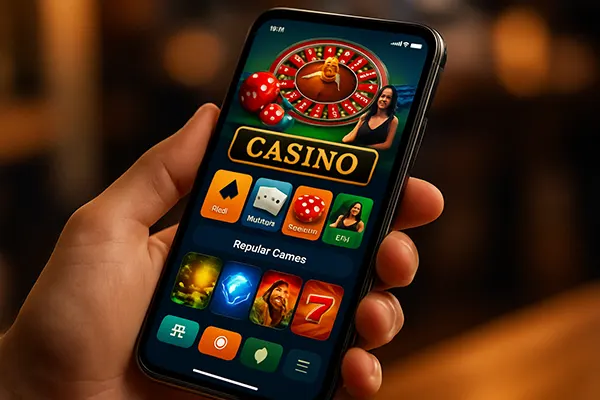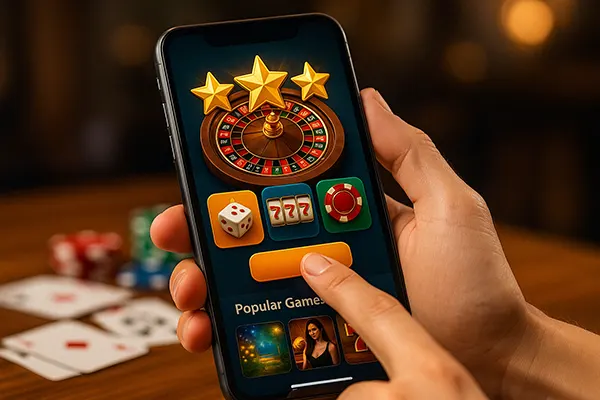
Mobile Casino UX Rankings 2025: Real User Experience and Interface Analysis
Mobile gambling is rapidly evolving, and with smartphones taking the lead in daily digital interaction, the quality of mobile casino platforms is becoming a decisive factor for user engagement. In 2025, user experience (UX) and interface efficiency have emerged as key parameters for evaluating top mobile casinos. This article explores the most user-friendly mobile casinos of the year, drawing on practical UX analytics and real player feedback.
Top Mobile Casinos in 2025 by UX Evaluation
Throughout 2025, several mobile casinos have stood out due to their interface clarity, intuitive design, and frictionless gameplay. According to recent UX analytics data, platforms like LeoVegas, Betway, and Mr Green have demonstrated superior adaptability across various mobile devices. These casinos prioritise user convenience, loading speed, and accessibility, ensuring players can navigate menus and access games without delay.
LeoVegas continues to lead thanks to its responsive layout and custom-built mobile app, which maintains full functionality even with slower internet connections. The platform’s intuitive navigation menu, clear categorisation of games, and seamless transitions between pages provide a user journey that mirrors that of a native mobile application. Betway, on the other hand, has focused on minimalist design and real-time support access, ensuring fast resolution of issues and a distraction-free environment.
Mr Green impresses with its personalisation features, offering tailored game suggestions based on playing habits and quick-switch tools for toggling between casino, sportsbook, and live dealer sections. The usability tests conducted by independent UX researchers confirm that players spend more time in apps that reduce the number of taps required to reach preferred games or features.
UX Metrics that Define Usability in Mobile Casinos
UX evaluation in the iGaming sector is rooted in several key metrics, including time to interaction (TTI), session duration, error frequency, and navigation depth. In mobile casinos, a TTI under 2 seconds is now considered a benchmark, and platforms achieving this regularly experience higher customer retention. In 2025, over 68% of players abandon platforms if initial loading exceeds 3 seconds, making speed an absolute priority.
Another fundamental UX factor is the clarity of interface elements, including buttons, game tiles, and onboarding prompts. Platforms that adopted larger, thumb-friendly touch zones and logical button placements have seen a 23% improvement in conversion rates for bonus claims and in-game purchases. Session duration also correlates strongly with ease of navigation—users are more likely to remain active if they don’t have to scroll excessively or endure repetitive actions.
Lastly, error rate and crash frequency heavily impact player satisfaction. Mobile casinos with fewer app crashes and fast auto-recovery mechanisms maintain a more loyal base. Frequent player feedback in app stores and forums shows a clear preference for platforms where transactional errors are minimal and instantly resolved with in-app notifications or support integration.
Real User Feedback and Testing Insights
Beyond technical metrics, real user testimonials and independent UX lab testing remain the most reliable sources for evaluating mobile casinos. In February 2025, user testing sessions across five European markets involved over 1,000 players interacting with 15 top-rated mobile platforms. The study confirmed that players prefer sleek design over feature-heavy apps, prioritising accessibility over visual richness.
Participants ranked Spinz Casino and Unibet highly for their clean UI and personalised dashboards. Particularly in Unibet’s case, accessibility tools like dark mode, adjustable font size, and voice-over support for visually impaired users scored exceptional marks. This accessibility-first approach is being adopted across the industry and is increasingly viewed as a marker of brand responsibility and UX maturity.
Moreover, one of the most highlighted features was the ability to resume interrupted sessions without re-authentication. Casinos that offered session continuity features, such as auto-login and saved progress, were praised for respecting user time and reducing friction. These seemingly small UX touches are becoming major differentiators in competitive markets.
Mobile-Specific Optimisations That Players Appreciate
Optimisations designed exclusively for mobile users have taken centre stage. For instance, gesture-based navigation is now a standard feature in premium mobile casinos. Casinos like CasinoFriday and Rizk have integrated swipe functionality for switching between games, profile settings, and promotional tabs, which users found highly intuitive.
Push notifications have also been reimagined in 2025. Instead of random bonus messages, players now receive targeted alerts based on activity, e.g., reminders of tournament deadlines or availability of new slot releases in their preferred categories. These push strategies boost re-engagement without crossing into spam territory.
Lastly, mobile-exclusive features, such as “shake to spin” or one-handed gameplay modes, are becoming highly popular. These innovations demonstrate that user experience isn’t just about looking good—it’s about understanding mobile behaviour patterns and embedding smart design into everyday usage.

Security, Payments, and UX Impact in Mobile Casinos
Usability is also closely tied to how secure and frictionless the payment experience is. In 2025, players expect biometric authentication (face ID, fingerprint) as standard for logging in and verifying transactions. Casinos that lack these features see increased drop-off during the payment stage.
Mobile-first casinos have partnered with eWallet services like Trustly, Apple Pay, and Revolut to allow instant deposits and withdrawals, often under 5 minutes. The UX here is not just about speed—it’s about visibility and confirmation. Players want instant feedback that their payment was successful, without needing to refresh or switch tabs.
Furthermore, real-time support during payment issues, accessible directly via the cashier interface, is now seen as essential. In-app chatbots trained on payment error resolutions significantly improve trust and satisfaction, especially among new users. A smooth financial journey within a casino app is now a core element of its overall UX score.
Future UX Trends in Mobile Gambling Platforms
Looking ahead, adaptive UX is predicted to dominate in late 2025 and beyond. Adaptive design adjusts interface elements in real time based on the user’s location, preferences, and device orientation. For example, game tiles will reorder themselves based on most played titles or ongoing promotions.
Gamification within the interface itself is also growing. Progress bars, levels, and achievement systems built into the navigation experience motivate return visits and longer sessions. These features have already been rolled out by platforms like Casumo and LevelUp, showing promising engagement data.
Finally, AI-driven personalisation will extend from game recommendations to full UI changes. Players will be able to select themes, menu layouts, and even preferred UX flows based on their habits. This shift transforms mobile gambling into a more customised and responsive experience, ultimately driving higher user loyalty and satisfaction.
